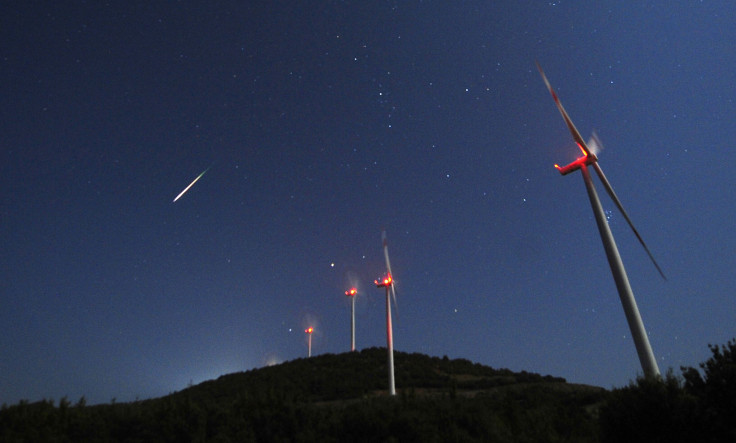Eta Aquarids Live Stream: Watch The Cinco De Mayo Meteor Shower Here

After the Lyrids, which appear in April, most stargazers have to wait until August's Perseids for a decent meteor shower. May's Eta Aquarids may not have the clout of some of the other major showers, but it does have a good pedigree. The meteor shower peaks overnight Tuesday and none other than Halley's Comet is responsible for the shooting stars. Slooh will have an Eta Aquarids live stream beginning at 8 p.m. EDT, which means neither a bright moon nor the city lights will prevent you from viewing the astronomical event.
Around the beginning of May, Earth passes through the debris trail left behind by Halley's Comet. The comet -- named after astronomer Edmond Halley -- has been observed for centuries and its orbit around the sun takes it past Earth every 75 years. The last time Halley's Comet was seen near Earth was in 1986 -- although it failed to live up to expectations and was deemed a dud. It will next appear in 2061.
The Eta Aquarids meteor shower gets its name from the constellation where the meteors appear to originate, known as the radiant. The constellation of Aquarius does not have many bright stars, so observers will have to do just a little more work to find the Eta Aquarids. Sky and Telescope's 2014 guide has a good method to finding the water jug of Aquarius in the night sky. For many, a bright waning gibbous moon will block out some of the dimmer meteors. The best viewing of the meteor shower will be in the Southern Hemisphere. NASA estimates up to 45 meteors per hour during its peak.
Slooh's broadcast will originate from its Canary Islands observatory and will include live feeds as well as an audio feed so viewers can listen to the meteor shower. The Eta Aquarids live stream begins at 8 p.m. EDT and can be viewed below.
© Copyright IBTimes 2024. All rights reserved.






















